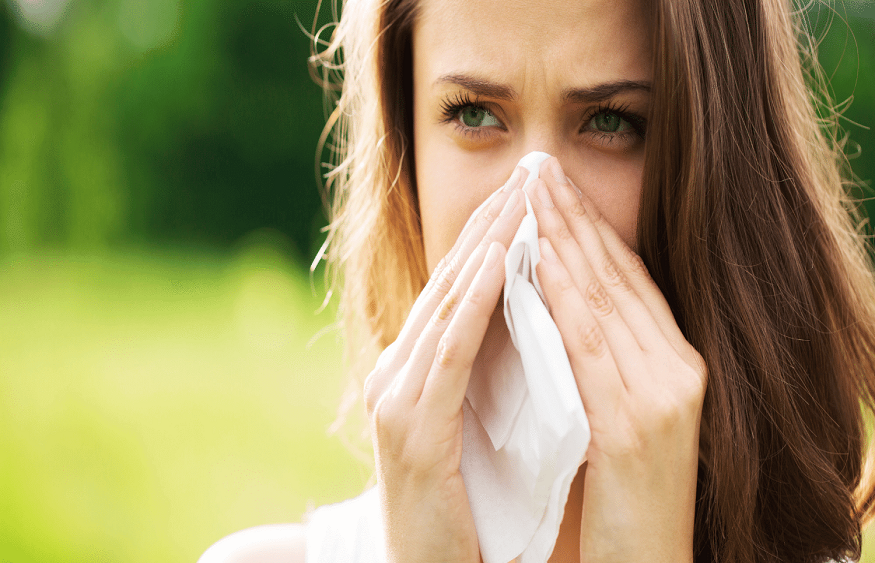The tendency to allergies is an inherited aspect of health. Children who have one parent or sibling with allergy(s) are at increased risk of allergy. If both parents are allergic, the child’s risk of allergy is at least doubled.
Nevertheless, there is no reason to worry: an increased risk does not necessarily mean that your child will develop an allergy later on. The sooner you know if your child is indeed prone to allergies, the more quickly and effectively you can common allergens prevent them. The best thing is to discuss it with your pediatrician or during pregnancy with your gynecologist. A family history, during which your doctor gathers all relevant disease information, is currently the best method of prognosing allergies.
Learn more
Choice of mode of delivery (cesarean section)
Babies born vaginally absorb a number of intestinal germs from the mother as they pass through the birth canal. These germs are of great importance for the child’s immune system. Ultimately, the child’s immune defenses during the first year develop mainly through microbial diversity in the intestine. Additionally, a vaginal birth is nowhere near as sterile an environment as a cesarean section in the operating room. This stimulates the child’s immune system and gives them a good start.
Yes, children born by cesarean section may absorb essential skin bacteria during delivery, but they lack typical gut bacteria, which can encourage the development of allergies. If you are lucky enough to be able to choose how your child should come into the world, know that from an allergy development point of view, natural birth will remain the best choice.
Smoking/tobacco smoke
Active smoking and passive smoking are not only harmful to the lungs and respiratory tract, tobacco smoke also promotes the occurrence of allergies, in particular allergic asthma (bronchial asthma). As parents, you can plan ahead by quitting smoking during pregnancy and after birth. Also make sure to ensure a non-smoking environment outside your home as much as possible.
Mold
An allergy can be triggered by a hypersensitivity to the spores (seeds) or particles of a mould. In the event of contact with the mucous membranes, after inhalation or ingestion, the allergic person reacts in particular with a cold, a cough and sneezing attacks. Unfortunately, mold is present almost everywhere. They grow best in moist, warm places where organic nutrients are available: on foodstuffs, wallpaper, cushions and curtains, in the kitchen, bathroom, cellar and garden. You can prevent mold by carrying out draft ventilation several times a day and thus ensuring a cool (not cold) and dry ambient atmosphere. The windows still tilted, heavy curtains in front of the windows or many indoor plants increase humidity and promote the development of mold. Buying a hygrometer is also a good investment. This humidity measuring device is not expensive, but gives the alarm as soon as the ambient humidity reaches a critical threshold.
Pollutants in ambient air
Pollutants in the home can increase the risk of allergies developing through the ambient air. Ideally, when buying new furniture and flooring, but also paints, varnishes or detergents, pay attention to information on the environmental impact. Regular airflow ventilation of the home helps keep the indoor pollutant load as low as possible. If possible, postpone painting and other renovation measures until after pregnancy and breastfeeding.
House dust/mites
House dust allergy is triggered by dust mites, or rather by the excrement of these arachnids which mixes with house dust. Dust mites, however, are not a sign of dirt. They are simply part of our lives and are not harmful to healthy people. However, they represent the most common allergen inside homes and can cause allergic asthma (bronchial asthma) or atopic dermatitis. However, when you clean normally, vacuum, air, wash the floors and wash the sheets and stuffed animals regularly, this is generally enough.
Pets
In Switzerland, after allergy to pollen and dust mites, allergy to animal hair is one of the most common types of allergy and can lead to atopic dermatitis or asthma. The name “animal hair allergy” is, however, misleading: the allergens are not the hair itself, but foreign animal substances such as animal saliva or sweat. In the absence of an increased risk of allergy, pets are no problem. On the contrary, contact with animals can even have a positive impact on the child’s immune system. The more he is “trained”, that is to say the more he has been in contact with substances foreign to his body, the stronger he will be in his development. Only children with a risk of allergy are better protected in a cat-free environment. On the other hand, having a dog at home probably has no influence in triggering allergies. If you are considering purchasing an animal, seek advice from your doctor or pediatrician in the event of a risk of allergy linked to family property. If there are no allergies in your family, nothing stands in the way of having a pet.
Excessive hygiene
Even if it seems to be a paradox: excessive hygiene can promote the occurrence of allergies in children. Worldwide, regions with very low hygiene standards record fewer allergic diseases than our Western industrialized countries. Here’s the reason: a strong immune system needs training in its early years. He must have the chance to discover very varied substances, foreign to his organism, and to confront them. This also explains why children in close contact with animals or who live on farms seem to be less likely to have allergies. Playing in the “dirt” obviously makes you less vulnerable to exacerbated reactions from the immune response.
Restrict contact with other children
To develop healthily, the immune system needs contact with bacteria and other pathogens. Put your child in contact with other children, if possible every day.

